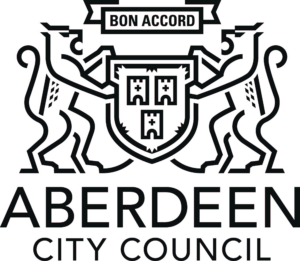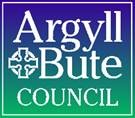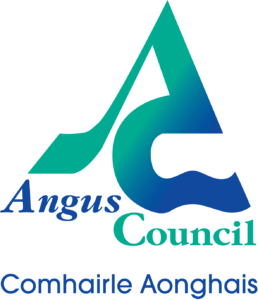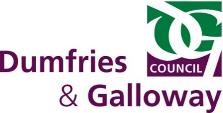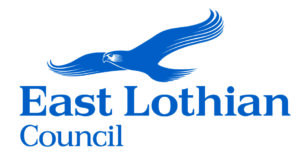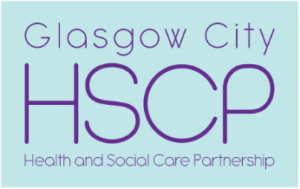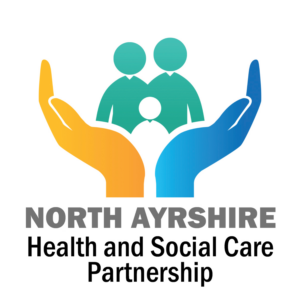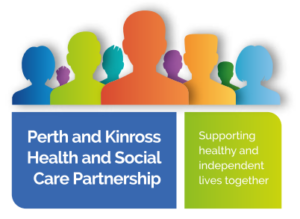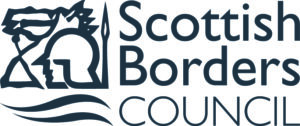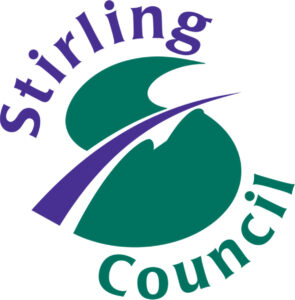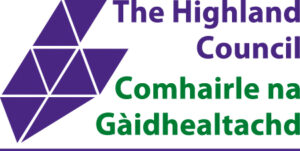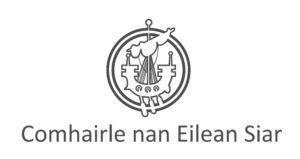Thank you for giving Social Work Scotland the opportunity to comment on these two important aspects of the Age of Criminal Responsibility (Scotland) Act 2019’s implementation: (a) the approach to Investigative Interviews (Part 4 (s57) of 2019 Act) and (b) the register of Child Interview Rights Practitioners.
We recognize the work that has gone in to these the two documents shared, prepared against a background of rapid reprioritisation, increased work pressures on all teams, and limited opportunities for engagement. We also appreciate that, in general, planning for the implementation of such a complex change (an increase in the age of criminal responsibility) in the current COVID-19 context is extremely difficult. We applaud the efforts that have been made to date, and look forward to supporting the work programme over coming months, in liaison with the new social work adviser seconded into Scottish Government.
Part 4 – Police Investigatory and Other Powers Statutory Guidance on Investigative Interviews
Overall the draft appears helpful and detailed. There may be potential for improvement in accessibility from a user’s perspective, and in terms of supporting integrated child-centred processes. Our specific comments below are divided in to three broad categories:
- High-level questions / suggestions (which we hope will be addressed in the next draft)
- Key concerns (with the draft and / or implications for practice)
- Specific suggestions and proposed replacement text
High-level questions / suggestions
- Review: This Guidance is “subject to annual review as the procedure is implemented”. Does this mean that this specific guidance will be reviewed in isolation from the rest of the Age of Criminal Responsibility (Scotland) Act 2019 (the Act) related guidance? We would also assume that the guidance would be comprehensively reviewed and updated as and when the age of criminal responsibility (ACR) is raised beyond 12 years of age (i.e. to 14 or 16).
- Accessibility: Is there a plan to assist children and families (and those supporting them) understanding of this process by way of accessible materials, designed with their needs and likely questions in mind? Such materials would help to explain the steps, address concerns and facilitate informed agreement /choice (as encouraged by para 2.7 and 2.9 of the draft). Such an approach would also be consistent with the approach to child-related policy demanded by UNCRC incorporation.
- Fit with other guidance: Is there a plan to facilitate the understanding and connection of relevant professionals by way of an index page or annex, listing and linking all the ACR-related guidance (stating the purpose and publication date each document)? For example, it would be helpful to cross link this guidance to the (soon to be published) National Guidance for Child Protection. We understand that there is ‘operational guidance’ on s57, that sits behind this Ministerial Guidance; that is fairly common practice, but we do feel all such documents should be accessible to partners, and shown in an index of the materials ‘giving effect’ to the Act.
- Practitioner grasp: The current structure follows the Act’s articles. This causes some doubling back on process and some repetition, arguably making the document more complex and less accessible than it could be. We would recommend that authors consider organising the text in correspondence to the process detailed in the flow chart (which could be situated at the beginning of the document) and then having, embedded electronic links within the flow chart that take the reader straight to the explanation in the text. The hard work is already done in describing what is supposed to happen at the various stages, and the flow charts seem logical and helpful. If our approach is adopted, it may be possible to reduce some of the explanatory text in the flow charts.
Key concerns
- Potential for disintegrated processes in the child’s experience: At para 2.2 it states “Agreement by the child and parent authorises an investigative interview of the child about the behaviour to which the investigation relates.” Is the implication of this that if a child starts to talk about immediate risks in relation to themselves and others the interview is halted and reconvened at some later date? Is there scope to gain agreement to an interview, the intention of which may well be specifically investigative but also (in that practitioners are required to have a wellbeing focus and adopt a trauma informed approach) should be protective (of this child and others affected by what is said). The intention of the interview is surely to find out what has happened, to prevent further serious harm which may be caused or experienced and to begin what may be a process of identifying and planning to address associated needs.
- Interagency Referral Discussion (IRD) and after: In relation to para 2.3, there may be other outcomes of an IRD, beyond those listed. See draft National Guidance for Child Protection – the box in Part 3 that provides some bullets. We believe it is important that the breadth of purposes of an IRD is kept in mind by all professionals, in all contexts.
- Para 4.6: There is helpful cross reference to the National Guidance for Child Protection here, but also some differences which may cause stress in implementation. For example, an IRD should be defined as a process involving a structured discussion, which may require revision or update discussions. It may not be achievable in all instances to hold a series of discussions.
- After an IRD, if an interview is to be held there is a need for co-ordinated planning between the specific professionals that will be involved, in order to properly respond to the needs of the child (such as communication issues), identifying variables and options, and preparing a plan which covers support before, during and after the interview. We suggest this crucial step be labelled (in the flow diagram) and described in the guidance. The IRD is unlikely to have time and relevant staff to meaningfully address all the planning. Relevant issues are included in the very detailed and helpful Annex C but the relevance of this stage is not apparent earlier in the guidance.
Specific textual adjustments for consideration.
This includes suggested deletions (shown as strikethrough); suggested replacement text (underlined); and additional suggestions (italics).
1.14. The intention is to find out what has happened, and begin to identify needs in order to plan support which can help to put the right supports in place for the child.
1.16. Decisions made in relation to interviews must be well considered and articulated. The reasons for decisions about holding interviews and the reasons for decisions arising from interviews must both be clearly recorded. Suggest join this para with 1.19.
1.17. The interview must be planned for and conducted on a collaborative basis, respecting the roles of others. Planning and conduct of an interview must be collaborative.
1.19. Interviews, including planning for and conduct at, as well as any decisions made (with reasons and authorisation where required), must be recorded and the records must be retained for transparency and audit.
1.20. It is important that Language that implies commission of a crime by a child under 12 should not be used. language which may be used in relation to criminal matters, is not used in relation to these investigative interviews.
1.21. The Act’s requirements regarding child interviews apply only to children under 12 suspected of seriously harmful behaviour. Police can speak with child witnesses of such behaviour and with children suspected of less harmful behaviour, without applying provisions in the Act. In cases of lower level harmful behaviour, police officers can still speak informally with children in an age-appropriate way, and without the need for this legislation. The Act is also not needed to ask a child about more serious behaviour if they are a witness, and not suspected of the seriously harmful behaviour themselves. However, where there is a need for the police to interview a child under 12 in relation to possible seriously harmful behaviour by them, this Act must be followed.
2.1. Informed agreement: Suggest cross refer to or put together with 2.4.
2.8. Recording: This requirement could be captured once; is already stated a few paras above and appears again at 2.10; and perhaps elsewhere.
2.9. Age and maturity: phrasing is repeated several times. Point could be made once.
2.16. In practical terms this requires that if in any doubt/periodically, they check that the child is OK to continue.
4.2. The Act places specific responsibilities on the police and local authority in relation to a multi-agency approach to investigative interviews. This approach includes all stages in planning and action, including consideration of the need for an interview; and consideration of any interim safety planning needed to protect the child from significant harm.
4.9. This para refers to the suitability of conducting an interview with the child in question. It is not clear what other factors would impact upon this decision making. Would this relate to the child’s ability to participate in interview?
4.10. What does ‘slow time’ mean?
4.11. Agencies can share relevant background/chronological information relating to child and family in relation to strengths, risks and needs in context. They should seek to work in partnership with parents and consult with health, education and other professionals who know the child well and hold key relevant information, as appropriate in each situation.
4.14. In gathering relevant information, it is important to remember that the children’s reporter can only refer the child to a children’s hearing on non-offence grounds. In relation to these grounds the standard of proof is the balance of probabilities and the civil rules of evidence apply (with the principal ones being that no corroboration is required and hearsay evidence is permissible). However, it might be that information comes to light during the course of the interview which could form the basis of offence grounds for another child.
4.16. and 4.21. There are examples of possible decisions which may emerge from an IRD (application for forensic medical) which are the prerogative of the Police. There may be other decisions as indicated above that are led by health (e.g. in relation to other forms of health examination) or social work, in collaboration with other partners. 4.20 is another extended part of the list of possible decisions from an IRD and/or subsequent planning.
4.17. This para states that the IRD should take place prior to any investigative procedures. Although the IRD should start at that time, as indicated above, IRD is a process which may be reviewed or revisited during the investigation as necessary.
4.18. The majority IRDs are now conducted virtually, online. This is likely to continue.
4.19: This para makes sense but could be said more briefly. The IRD should make this decision and it should be noted that the outcome is likely to be impacted upon by what the child says in interview.
4.20. If published after the National CP Guidance, should this reference the new language of Child Protection Planning Meeting?
4.22. Should this be located earlier in the section on ‘Agreement’?
5.5. Whether the questioning of the child is appropriate given their circumstances (including age and matters related to the child’s behaviour) should also take account of the child’s experiences, speech. Language and communication needs etc.
Annex C: The interview plan. There is much information in this annex which could helpfully be included in the main guidance.
- An interview plan must be drawn up by the police in collaboration with the local authority. It must include any directions given in a child investigative order and it must specify:
- the period over which the interview will be conducted;
- the number of meetings which will take place as part of the interview; There is a need to be flexible – this will not be clear until the needs of the needs of the child are identified during the interview and will be influenced by what the child has to say.
- the date of each meeting;
- how long each meeting will last; This will depend upon the needs of the child – flexibility will be required.
- the location at which each meeting will take place;
- the persons by whom child may be questioned at each meeting. Again, although this is mentioned elsewhere, there is a need for flexibility within the interview;
- the support and assistance required by the child during the interview; Although this can be planned for, there is a need to be aware that the needs of the child may not be apparent until during the interview – a child’s presentation can expected to vary from their usual presentation in the context of the interview and
- any other relevant information (e.g. transport details for the child to and from the interview authorised in an interview order or by agreement).
- Where there is any need to deviate from the initial plan, this should be recorded by each agency and shared with the child, the parent who has given agreement and the child interview rights practitioner, as soon as reasonably practicable. In any case, this should be done prior to the commencement of the interview. The plan as described does not allow for any flexibility to respond to the needs of the child as they present in interview.
- The child’s needs will dictate the number and length of meetings. This is not likely to be evident in advance and this needs to be acknowledged when planning for the interview.
- Suggest include consideration of past trauma
- Other supports may be required, such as communication boards, other visual aids or signing. All specialists brought in to assist in preparing for the interview should be independent from the investigation, qualified and be accredited in their role. The use of such supports will require further significant planning. For example, a communication tool that a child uses in the school environment may not include the words/ themes to be explored during the interview. Also, it might be that a child uses a communication aid with a learning assistant or someone who would be appropriate to support their participation in interview. They could be trained, but not necessarily qualified and accredited.
- Speaks about the need to consider children’s culture and customs, for example when timetabling the interview. There is indeed a need to take account of this, but there is a need to consider the needs of all children when timetabling an interview. For example, it would not be helpful to interview a child taking medication for ADHD at the time their medication is wearing off. It would not be appropriate to interview child over lunch time without them having eaten etc.
22 & 23. The guidance should make more than a passing mention of the need to adopt a trauma informed approach and be more specific about what this means for supporting the child’s participation in interview. Reference is made to “visible signs of trauma”. It is important that the impact of trauma can manifest in many different ways – it might be the child who is visibly distressed, or the child who appeared disengaged or confrontational, etc. It is important that the complexity is recognised. This should be addressed in the body of the guidance rather than in the Annex describing the interview plan.
- 25. This para refers to the taking of notes. It would be helpful for there to be more guidance about the natures of notes/ level of detail required (salient points).
- In circumstances where the child makes a disclosure of a child protection nature, it will be at the discretion of the attendant interviewers to make a dynamic assessment1 as to whether the interview should terminate and a child protection inter-agency referral discussion instigated. The outcome may be that the investigative interview is resumed. In instances where both of the interviewing professionals are joint investigative interview trained, and if appropriate, it may be possible to resume the interview and re-direct the questioning to address the disclosure made. A decision to progress with a JII would not be a continuation of the interview. This would be a new and separate process.
- On occasions where the interview is paused, due to a child protection disclosure being made by the child, then police should be led by social work, who are best placed to advise how to proceed and to indicate anticipated timescales where possible, for progressing the interview, if this is required. Child protection planning processes are a shared responsibility, aspects of which are led by police, by health and by social work. Decision making about JII is collaborative – a shared responsibility.
- Police may still continue with enquiries to gather evidence about the incident under investigation and police and social work must regularly hold discussions to share new information so that the best outcomes for the child can be determined, including whether the child may be in need of compulsory measures through the children’s hearing system and should be referred to the Principal Reporter.
- Interview venue – consideration should be given to the needs of the individual child beyond whether they are a young child or whether they have a disability
- Children being interviewed under the Act are likely to be distressed, anxious and may be highly vulnerable. Child protection concerns may be known or emerge during the interview. This requires all professionals to be flexible and compassionate in their handling of the interview. A child may present, for example as withdrawn, or verbally aggressive. They may respond variously to their experiences.
- All professionals will have a responsibility … Should this guidance specify which specifically?
- 36. This para refers to sharing of the plan – refer to previously noted concerns about this suggested rigidity of the plan. If the plan states that two interviews are required, and the needs of the child dictate three or four, it may be difficult to secure the child’s engagement beyond the second interview.
- At all stages of the investigation, professionals must be alert to the child’s individual needs and take a trauma-informed approach in their interactions with the child. Potential to say what this means or cross refer.
Child Interview Rights Practitioners
In general a helpful document, well laid out and clearly articulated. Our specific comments are:
- Although there is clearly transferrable learning in relation to preparation, and principles are transferable, it is important that the guidance maintains a clear distinction between Scottish Child Interview Model (SCIM JII) interviews and ACR interviews. While both interviews are seeking to inform the wider risk assessment, in an ACR interview a crime has not been committed, and in a SCIM JII the interviewers are seeking to secure forensic information in relation to a crime that may have been committed.
- We acknowledge the need and the challenge of ensuring a sufficient spread of, and access to, Child Interview Rights Practitioners across Scotland. In rural and island communities the pool of those accredited and accessible may be very small. (Has an island impact assessment been conducted in respect to this policy, and if so, what are the mitigating measures which will be put in place to ensure the policy is implemented in all island communities?)
- We expect that appointment, training and support materials will ensure Child Interview Rights Practitioners have a broad and deep understanding of child development, and are able to progress beyond being ‘trauma informed’ to being skilled in applying their knowledge and awareness into their practice.
- There is support among our members for the potential for Child Interview Rights Practitioners to have some continuity of role, if and when appropriate, in subsequent processes, while recognising differences in function in the setting of the Investigative Interview and a Hearing.
Specific textual adjustments for consideration.
This includes suggested deletions (shown as strikethrough); suggested replacement text (underlined); and additional suggestions (italics).
Para 2: Increased specificity around “Where there are concerns about seriously harmful behaviour.”
Para 3: Replace “lower level harmful behaviour” with “Where behaviour is unlikely to cause serious harm”
Para 8: Typo line 3, replace ‘had’ with ‘have’
Para 20: Replace “to follow a model developed from” to “consistent with principles of…”
Para 21: We are not convinced that sharing the interview plan with the child will achieve the intention specified in the final line.
Para 27: As there have been differing views on projected incidence of serious harm at each age range, will there be some flexibility with estimated costs?
Draft Code of Conduct
Para 4: Would it be appropriate to reflect the role of IRD here. There will have to be detailed interview planning following IRD when the decision to have/apply for an interview has been made and that may be the stage at which a Child Interview Rights Practitioner is involved and we would expect that planning with them would be standard, rather than a beneficial extra?
Para 7: Helpful considerations listed here, but there may be a range of other reactions and presentations including anger, disassociation, and confusion. Communication support needs may affect presentation (although this is covered elsewhere). ‘Trust’ is a tall order for a requirement, as that is a quality which may not necessarily be evoked, despite empathy, honesty, clarity, etc. For some children, they have developed protective behaviour of distrusting all adults; that should not preclude them from having their rights protected by a Child Interview Rights Practitioner.
Para 8: After “all professionals”, suggest insert “involved in the process”.
Para 12: Alternative phrasing suggested: “Other processes may be more appropriate. If a child is at risk of significant harm, child protection procedures apply. If it becomes apparent that the behaviour of concern is unlikely to have caused / to cause serious harm, EEI processes may be appropriate.”

